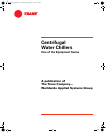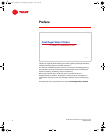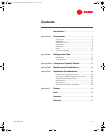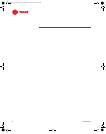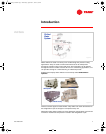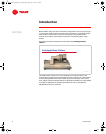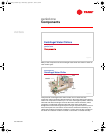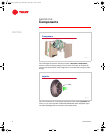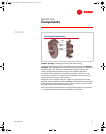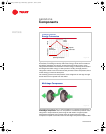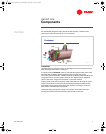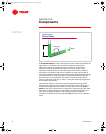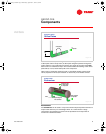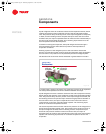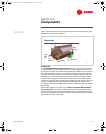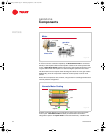
TRG-TRC010-EN 5
period one
Components
notes
The rotation of the impeller causes the refrigerant vapor to accelerate within the
impeller passages, increasing its velocity and kinetic energy.
The accelerated refrigerant vapor leaves the impeller and enters the diffuser
passages. These passages start out small and become larger as the refrigerant
travels through them. As the size of the diffuser passages increases, the
velocity, and therefore the kinetic energy, of the refrigerant decreases.
The first law of thermodynamics states that energy is not destroyed—only
converted from one form to another. Thus, the refrigerant’s kinetic energy is
converted to static energy or static pressure.
Refrigerant, now at a higher pressure, collects in a larger space around the
perimeter of the compressor called the volute. The volute also becomes larger
as the refrigerant travels through it. Again, as the size of the volute increases,
the kinetic energy is converted to static pressure.
Due to its pressure and temperature, the refrigerant leaving the compressor is
in a condition that allows its heat to be rejected from the chiller.
volute
volute
diffuser
diffuser
passage
passage
impeller
impeller
passages
passages
Centrifugal Compressor
Figure 9
trgtrc010_book.book Page 5 Wednesday, September 1, 1999 10:39 AM



